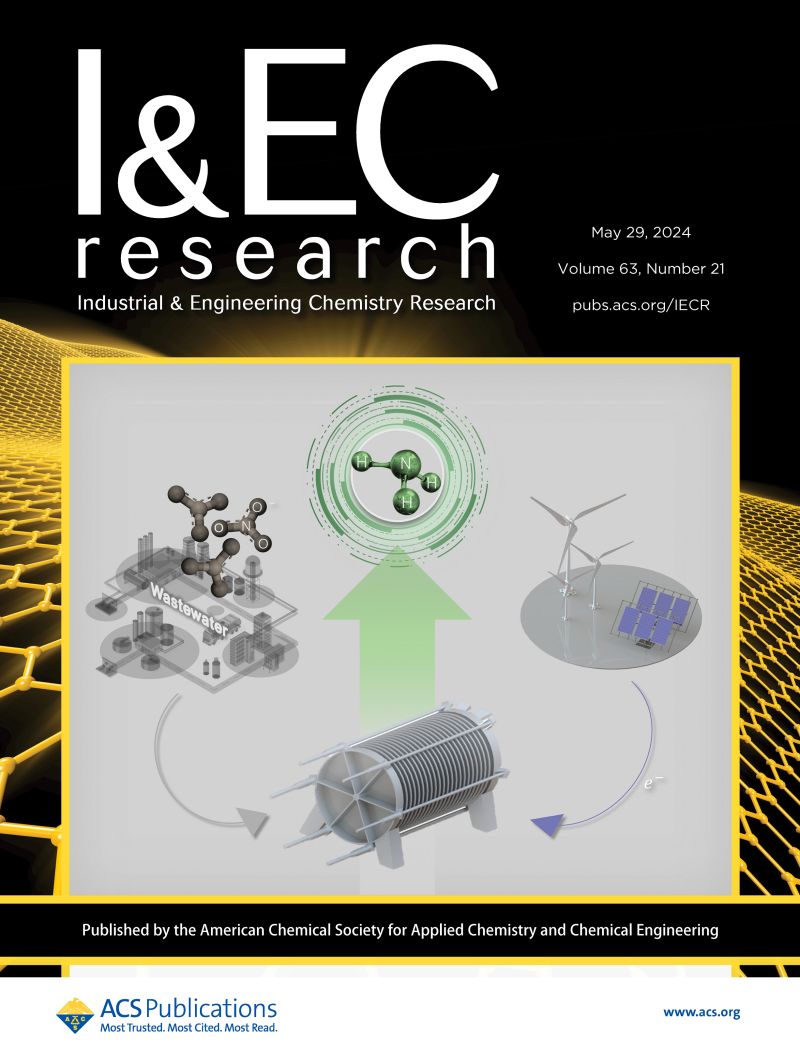Electrochemical Degradation of PET Microplastics and Its Mechanism
IF 3.9
3区 工程技术
Q2 ENGINEERING, CHEMICAL
引用次数: 0
Abstract
Polyethylene terephthalate (PET) is a common packaging plastic that degrades extremely slowly in the environment, with low efficiency in both photodegradation and biodegradation. This study investigates the electrochemical degradation of PET MPs. First, the electrochemical degradation process of PET MPs in aquatic environments was examined. Under the condition of no additional catalyst, the degradation efficiency was measured using a weight loss method, and more efficient electrolysis efficiency was obtained through orthogonal experiment. After 6 h of electrolysis, the weight loss was as high as 68%. The analysis shows that electrolysis temperature is a more critical factor than current density, pH, and surfactant concentration. Second, by studying the changes of soluble organic pollutants in PET MPs and electrolyte with time and temperature during the reaction process, indicating that the increased crystallinity of PET MPs limits the enhancement of degradation efficiency. Furthermore, it was pointed out that the oxidation–reduction reaction of the electrode reaction was enhanced by the surfactant. Combined with the active species analysis, hydroxyl radicals (•OH) and sulfate radicals (SO4•–) play a role in the degradation of PET MPs. The mechanism of electrochemical degradation of PET MPs was hypothesize. The electrochemical degradation method used in this study is characterized by a short treatment time and high efficiency, providing a feasible solution for improving microplastic degradation efficiency, and also provides an effective reference for electrochemical degradation of insoluble pollutants in water.

PET微塑料的电化学降解及其机理
聚对苯二甲酸乙二醇酯(PET)是一种常见的包装塑料,在环境中降解极慢,光降解和生物降解效率都很低。研究了PET MPs的电化学降解。首先,研究了PET MPs在水生环境中的电化学降解过程。在不添加催化剂的条件下,采用失重法测定降解效率,并通过正交实验获得更高效的电解效率。电解6 h后,失重率高达68%。分析表明,电解温度是比电流密度、pH和表面活性剂浓度更重要的影响因素。其次,通过研究反应过程中PET MPs和电解质中可溶性有机污染物随时间和温度的变化,表明PET MPs结晶度的增加限制了降解效率的提高。此外,还指出表面活性剂能增强电极反应的氧化还原反应。结合活性组分分析,羟基自由基(•OH)和硫酸盐自由基(SO4•-)在PET MPs的降解中起作用。对PET MPs的电化学降解机理进行了假设。本研究采用的电化学降解方法具有处理时间短、效率高的特点,为提高微塑料降解效率提供了可行的解决方案,也为电化学降解水中不溶性污染物提供了有效参考。
本文章由计算机程序翻译,如有差异,请以英文原文为准。
求助全文
约1分钟内获得全文
求助全文
来源期刊

Industrial & Engineering Chemistry Research
工程技术-工程:化工
CiteScore
7.40
自引率
7.10%
发文量
1467
审稿时长
2.8 months
期刊介绍:
ndustrial & Engineering Chemistry, with variations in title and format, has been published since 1909 by the American Chemical Society. Industrial & Engineering Chemistry Research is a weekly publication that reports industrial and academic research in the broad fields of applied chemistry and chemical engineering with special focus on fundamentals, processes, and products.
 求助内容:
求助内容: 应助结果提醒方式:
应助结果提醒方式:


